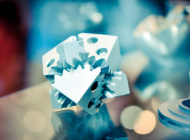
One of the 3d printing technologies that is used today is SLS (Selective Laser Sintering). It is a powder-based form of fabrication and has a wide array of engineering-grade materials that is uniquely available to SLS 3d printing method.
SLS is known as the most versatile and commonly used 3D printing technologies. It is also used for making airplanes, machine components, wearable s and production tools.
In order to better understand SLS 3D printing, here are 5 concepts that help understand SLS 3D printing.
What is Selective laser sintering (SLS)?
Selective Laser Sintering (SLS) is an additive manufacturing process which belongs to the powder bed fusion family. The materials used in SLS are thermoplastic polymer which comes in a granular form.
Brief history of SLS
SLS was first developed by Dr Carl R. Deckard while he was an undergraduate at University of Texas during the 1980s. He studied the process together with his professor, Joe Beaman. They founded a company called Desk Top Manufacturing (DTM). The company was later sold to 3D Systems in 2001.
In SLS, a laser selectively moulds the particles of a polymer powder causing them to fuse together and build a part layer-by-layer.
How Selective Laser Sintering (SLS) works?
Selective Laser Sintering technology enables 3D printing an object by sintering sections of sequential layers of powder using a powerful laser beam. It moulds the powders that are placed on a powder bed.
SLS is exceptional for producing parts with mechanical properties. SLS can also be used for additive manufacturing small functional parts.
Here are the basic steps on how SLS works:
- The powder bin and build platform are heated first. Make sure that the temperature is just below the melting point of the polymer. A recoating blade will spread a thin layer of powder above the build platform.
- The contour of the next layer will be scanned by a CO2 laser. Then, the laser will selectively fuse together the particles of the polymer powder.
- After the layer is completely scanned, the build platform will move downward and the blade will re-coat the surface of the object. This process is repeated until the whole part is entirely printed.
Proper care should be made to ensure the designs are optimised for easy printing with a 3D printer in order to compensate height tolerances.
Benefits of SLS 3d printing
SLS 3d printing has a lot of benefits in different industries. Here are some of them.
-
Can be used in different design applications
It can be used to make several functional features including threads, axles, hinges and tanks. Complex geometries such as undercuts, negative draft and interior features can also be achieved.
-
Materials
There are several materials that can be used for SLS. Majority of these materials are based on polyamides. SLS also use metals such as titanium, gold, silver, etc. These metals are typically in powdered form.
-
Limited/no support materials needed
A distinct benefit of SLS is that it needs no support structures, and parts can be added during the build, unlike other processes. Since it does not requires support materials, it can be processed further to achieve desired surface finish and colour, thereby improving mechanical properties or appearance.
Limitations of SLS 3d printing
Aside from the benefits, SLS 3d printing also has its limitations:
- SLS printers can be very costly. It often cost $250,000 or higher. Furthermore, materials can cost $50-60 per kg of powder.
- SLS produces 3D parts that usually have rough or grainy surface.
- It requires long production time. Cool down time can take up to 12 hours or longer.
SLS vs SLA
Some clients are confused about the difference between SLA and SLS. The main difference between the two is the material selection. With SLA, polymers and resins are used. Although SLS can work with few plastics such as nylon and polystyrene, it is mainly used to handle metals like titanium and steel.
SLA also uses liquid photopolymers while SLS uses powder materials. Liquid photopolymers are less expensive than SLS powders.
When it comes to precision, the possibility for SLA prototypes to shrink is only less than 0.4%. On the other hand, the shrinking rate for SLS prototypes can reach 2-4%. This means that SLA can produce more precise 3D parts.
In addition, SLS prototypes can be corroded by chemicals and humidity. It can be deformed easily when temperature reaches 38°C. While for SLA, it has a high resistance to humidity, temperature and chemical corrosion.
Conclusion
Using SLS is an ideal solution for those who want to produce functional products especially with complex geometries.
Compared to SLA, SLS is still known to be cost-effective because it provides very high design freedom and high accuracy on parts. It also produces prototypes with good and consistent mechanical properties. Although it has its limitations, the capabilities of SLS can be used to its fullest.
If you are interested in SLS 3D printing, you can call a trusted 3D printing service company to work on your project. They also offer services such as 3D design modelling, custom 3D printing parts and many more.







